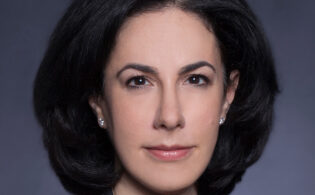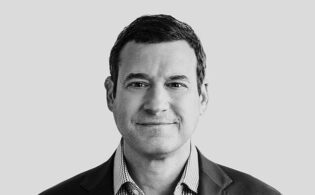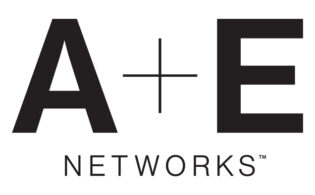Edward Sabin, executive managing director for international at A+E Networks, sat down for a keynote conversation with World Screen’s Anna Carugati at MIP Cancun, discussing global strategy and trends in the market.
The company encompasses much more than linear networks, Sabin said. “A+E Networks has channels in more than 200 territories, we transmit in 41 languages, 87 feeds, we reach 350 million viewers outside of the U.S. alone. We are operating seven brands globally. In addition to all of that, we are a big program distributor. We have a huge catalog of content that gets replenished to the tune of about 1,600 hours a year, and that content nourishes our channels but is also available through a big distribution team in offices around the world. It’s a content company at its core. We’re storytellers, we’re engaged with creative communities around the world. It’s important for us to get those stories out to as many people on as many platforms in as many ways as we can.”
On A+E’s approach to a fragmenting landscape, Sabin noted, “Our job is to tell great, compelling stories. If you do that then people will find the content.” The company’s content is available on linear and digital platforms in all markets around the world. And while digital is an “evolving, growing” part of the business, linear “is so core from an economic perspective that it’s the focus of much of our efforts.” However, most of the “new thinking is around bringing that content to audiences in different platforms in different ways.”
Carugati, group editorial director of World Screen, asked Sabin about how A+E Networks is addressing the disruption caused by digital platforms and changing viewing habits. “The word disruption is used a lot and it’s an accurate but kind of a negative spin on what’s happening in the world. I see it as more opportunities to reach more people in different ways.”
Sabin then stressed again the importance of traditional linear viewership, both in terms of revenues and reach. “So much of our time is focused on thinking about how to branch out and reach people in new ways, but even in the most digital-forward territories—Northern Europe, parts of Asia—you’re still getting 80-something percent of your viewership on linear channels and 95 percent of your revenue.”
Referencing Latin America in particular, Sabin said that A+E Networks was one of the first companies to deploy TV Everywhere experiences. “Maybe 1 percent of our viewership comes from those platforms.”
Nevertheless, A+E Networks has been evolving its brands to reach digital audiences, Sabin said. In the U.S., the company has offered a variety of TV Everywhere initiatives to platforms and launched SVOD services, which are also beginning to roll out internationally. HISTORY Vault in the U.S. “super-serves the history content lover,” he said. Lifetime Movie Club delivers Lifetime movies. Those services are revolutionary, he said, because they were among the first direct-to-consumer extensions of basic-cable brands in the U.S. HISTORY Vault is also in Canada, via a deal with Corus. “We are exploring in all of our territories, including Latin America, how to become more engaged on a digital-platform basis in partnership with our traditional linear affiliates.”
In addition to taking linear content and making it available on digital platforms, A+E Networks is thinking about how to produce content that will “speak to different audiences” on digital platforms. In the U.S., A+E Networks launched 45th & Dean to produce “short- and mid-form content just for digital platforms,” such as Second Chance for Snapchat. “It had 80 million views, which is a big success for that platform, and it was developed, conceived, produced, budgeted, to hit that platform and speak to those viewers in the format that they consume content in.” The company also produced for Facebook Watch Bae or Bail, which received 35 million views in its first week or two. “Digital studio providing and developing content on a digital platform for digital audiences—how do we do that elsewhere in the world? We’ve launched in Southeast Asia, based in Singapore, a digital studio to produce short- to mid-form content in partnership with brands.” Sabin said he’s hoping to replicate that model in Latin America and other parts of the world.
Sabin cited another disruptive force in the landscape: “The growing desire by viewers to see local content. The days of merely exporting American content to fill prime-time schedules around the world are gone. We still do a tremendous job of airing that content on our own channels and then selling it to third parties, but we recognize that we have to complement the offering we give to our viewers with local content. So we’re putting more focus on developing local content and even looking into investment in and ownership of local production companies to help serve that pipeline.”
Korea, Sabin said, is a “perfect microcosm of all of these strategies hitting at once.” A+E Networks finally entered that market this year following a change in local regulations. “We bought two channels in Korea, rebranded them as HISTORY and Lifetime. Every show we greenlight there has both a linear plan and a digital plan. And we have greenlit the first scripted non-English-language series in the history of A+E, which we’re doing in partnership with SK in Korea. There will be a digital window and a linear window.” That will also be the case for the company’s unscripted shows.
The conversation then moved to the continued importance of brands in this environment. “In a world of digital production and distribution, anybody with a great idea and an inexpensive camera and an editing system can create content. That happens all over the place. But how do you curate that? How do you promote? Our brands become even more important. [Viewers] come to us knowing what they’re going to get. It’s even more important for us to underscore the clarity and prominence of our brands. By doing that we have a calling card, not just to the viewers but also to brands we partner with. We can give [the brands] an experience online, on Facebook and on the linear platform as well.”
The business model of owning content is at the heart of the company, Sabin noted. “It also speaks to the creative impulse of the company. The executives at A+E Networks don’t view themselves as buyers of content, they view themselves as creators or co-creators of content. When you put your creative heart and soul into a project, you own it and you own the vision and the execution. That translated into a business model.”
With the company being led by CEO and president Nancy Dubuc, who started in development and worked her way up the executive ranks, “every decision we make begins and ends with the creative vision and passion behind it.”
Sabin was then asked about how partnerships have been instrumental in A+E Networks building its business globally. “Partnerships are at the core of what our company is. A+E Networks is a partnership between Hearst and Disney. We have partnership coursing through our veins. When we looked to launch channels internationally, we did it in large part with partnerships around the world. In the U.K. we have a partnership with Sky. In Southeast Asia we had, and then bought out, a partnership with Astro. [In LatAm] we have the great fortune, or wisdom, of finding probably the best partner we have in our corporate family, Ole Communications [led by] Enrique Cusco. He invented the import of American television into this marketplace, and he is the best partner we have. He also has a very important position with HBO, which is another major partner of ours in the marketplace. HBO distributes our channels in a bundle with some of the other big channel brands.”
The Latin American region is still growing, Sabin said. “Even in the linear space. A&E and HISTORY are fully distributed on pay. Lifetime and H2 are half, half-plus. Right there, there is growth.”
The region is also special because there’s strong crossover in terms of audience tastes with the U.S. “And it’s a market where the creative genius has been less tapped than other parts of the world.”
He added, “We want to find great storytellers and great stories, whether they are scripted drama or unscripted. We are open to talking about co-productions with U.S. Hispanic platforms or digital platforms or free-to-air platforms. We want to be at the top of the list of any producer who has a worthy, strong idea that they want to fight for and are passionate about.”






